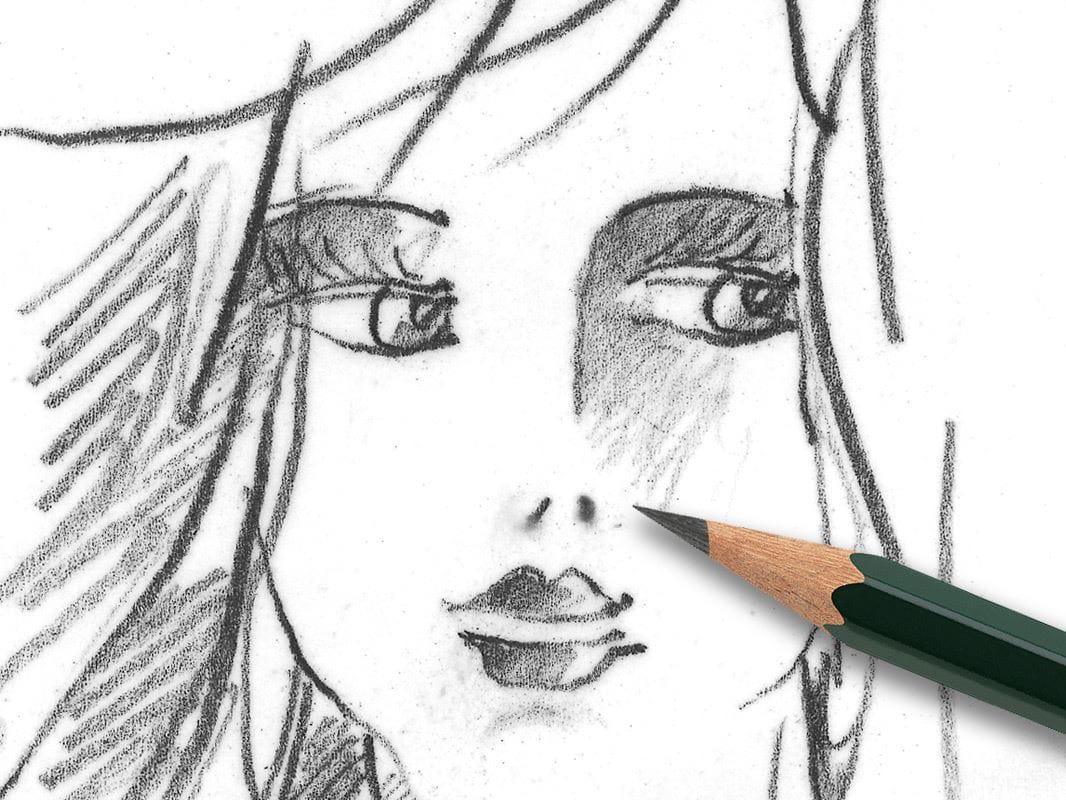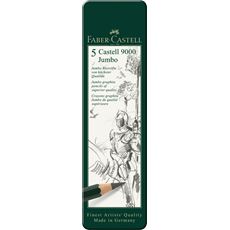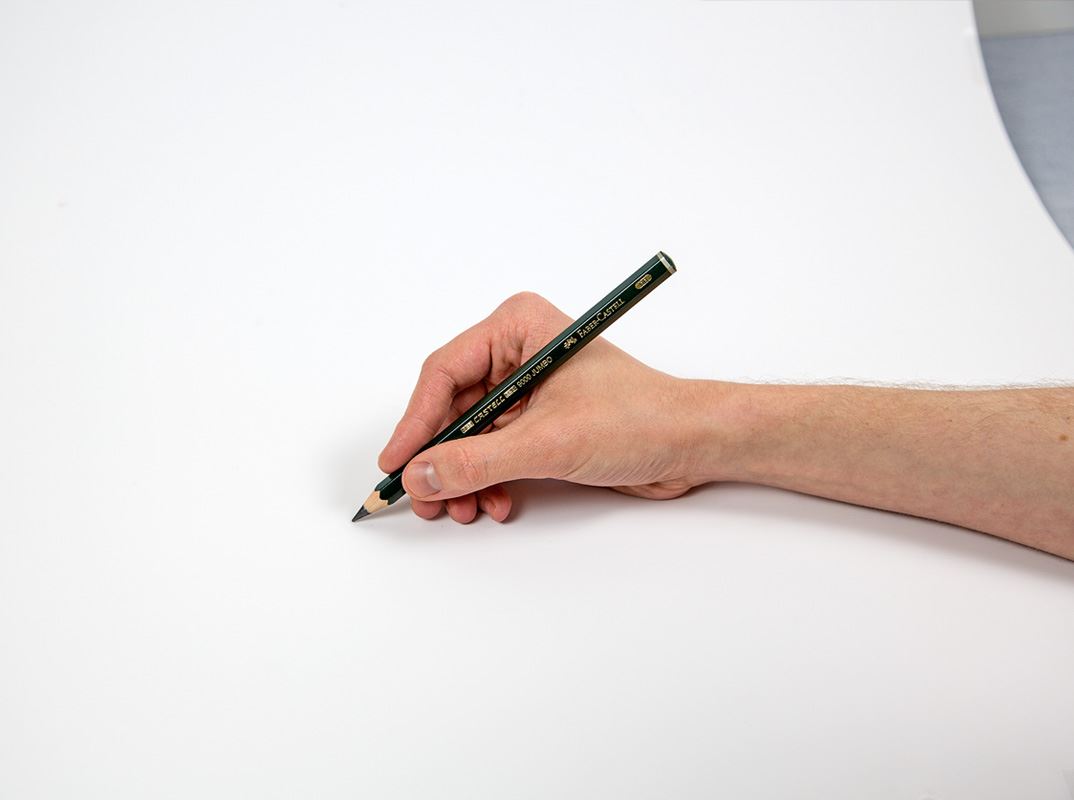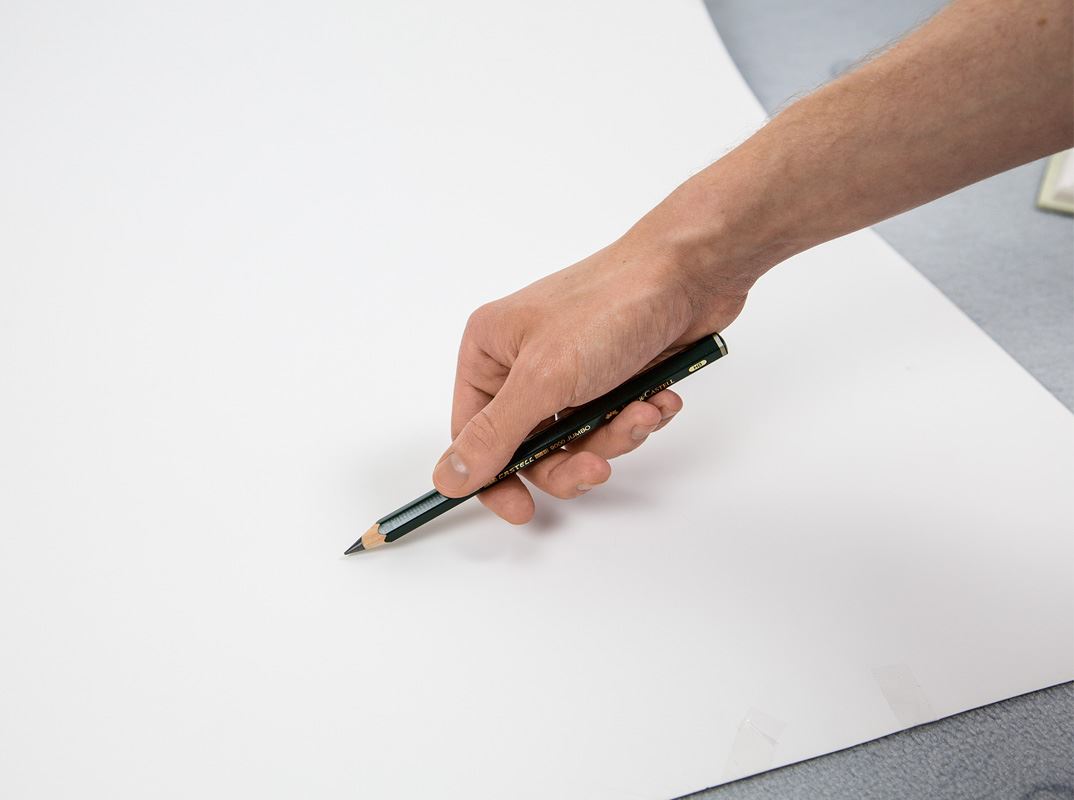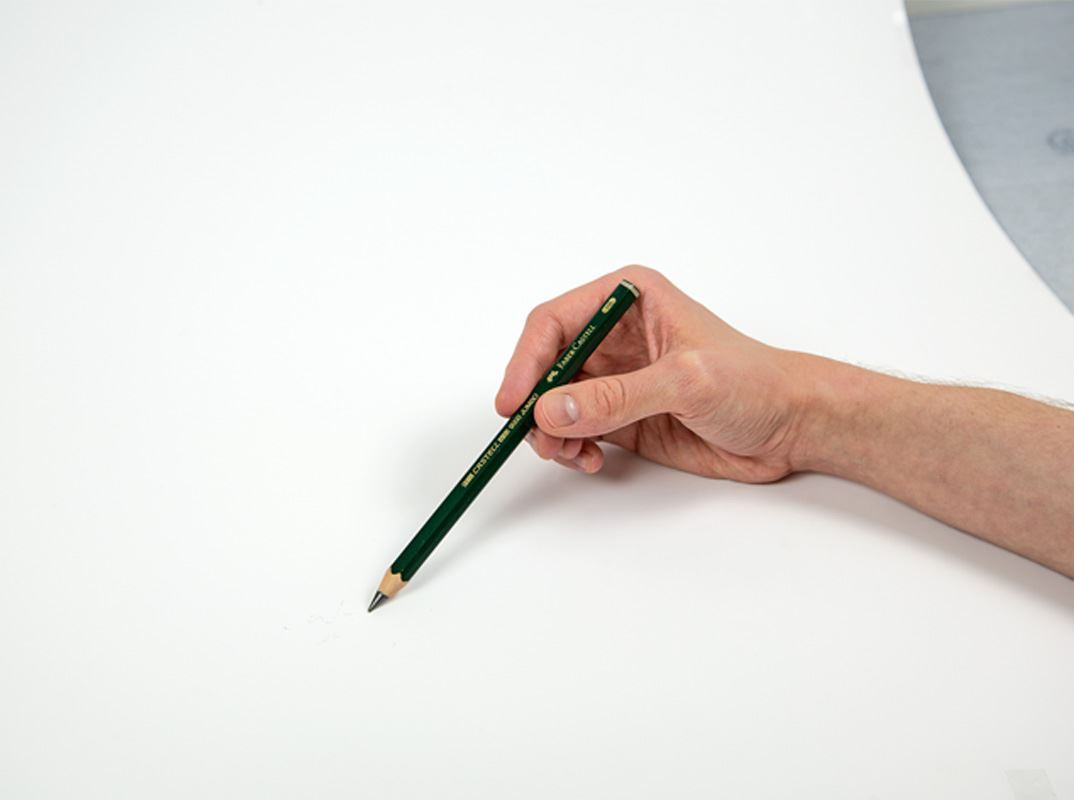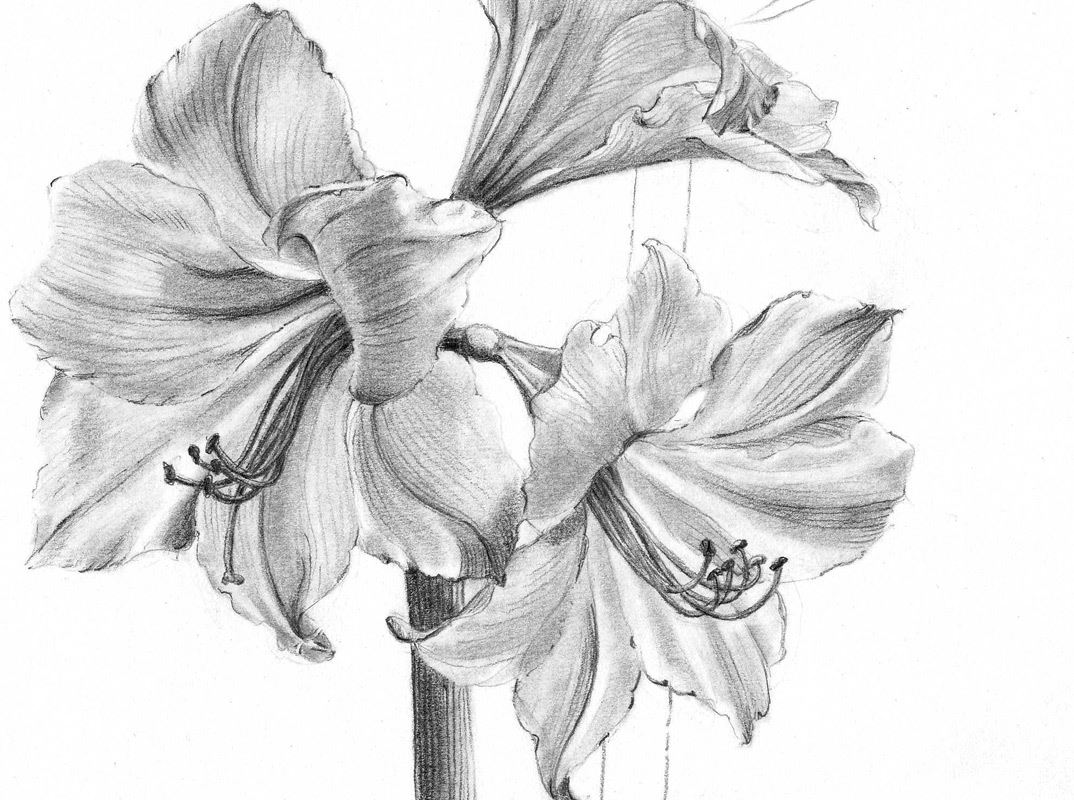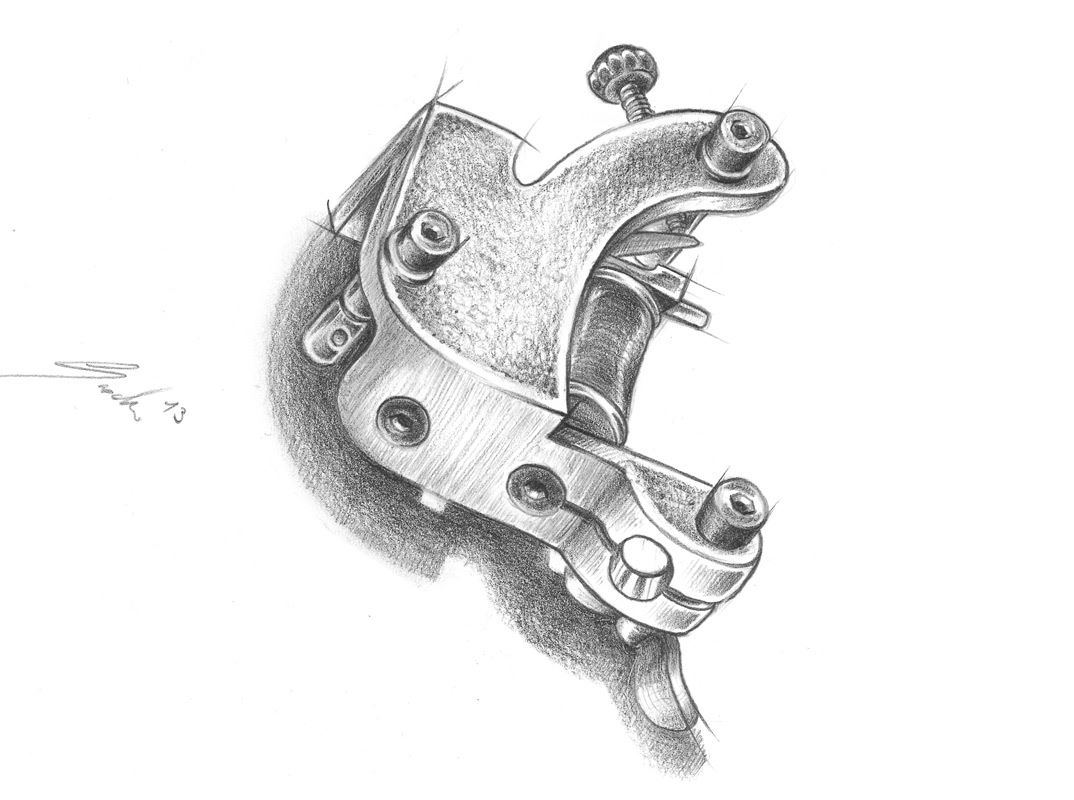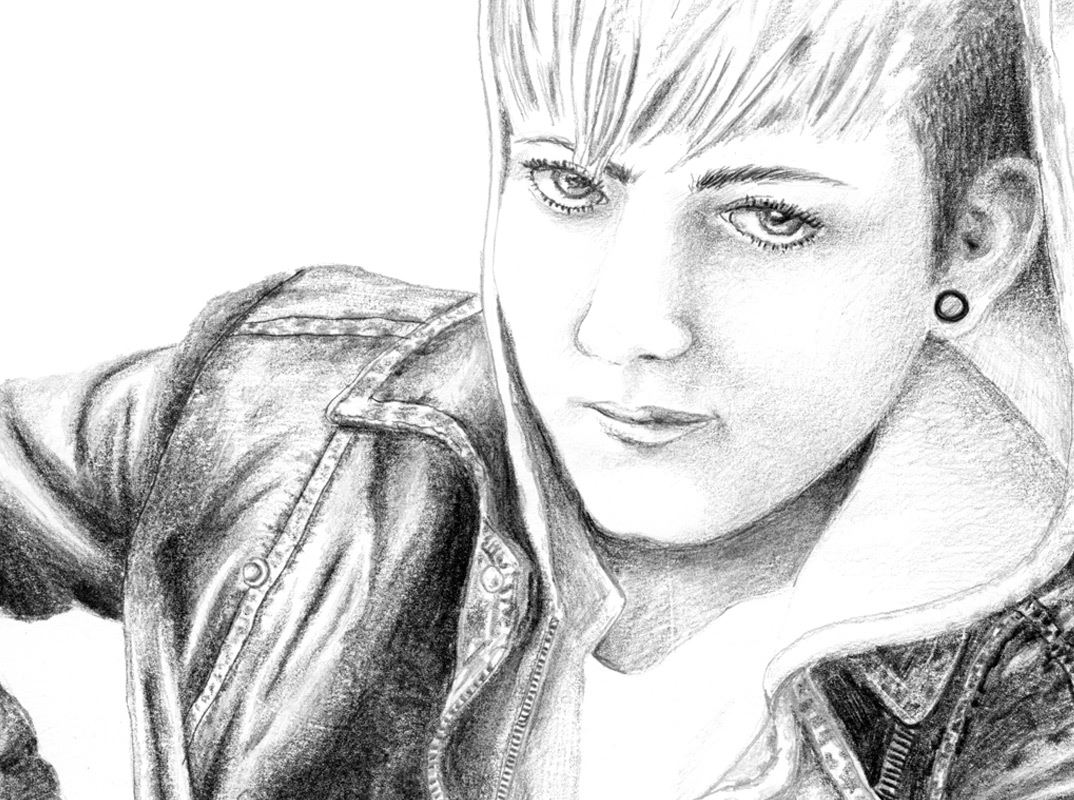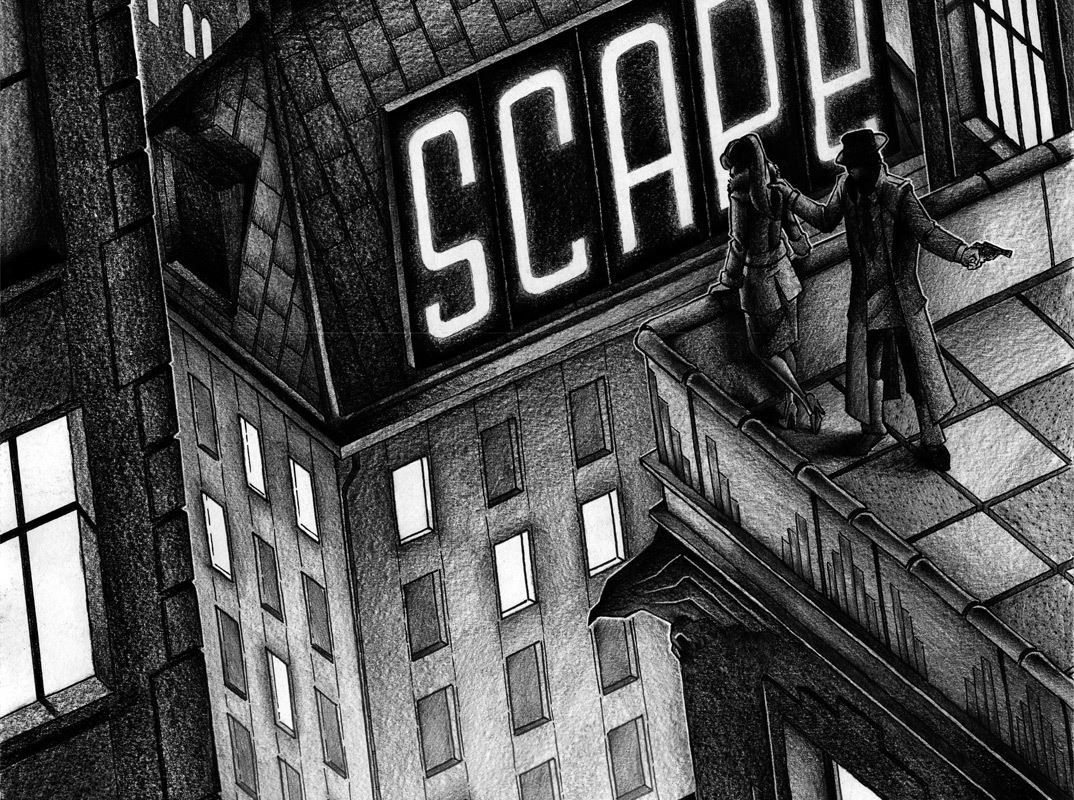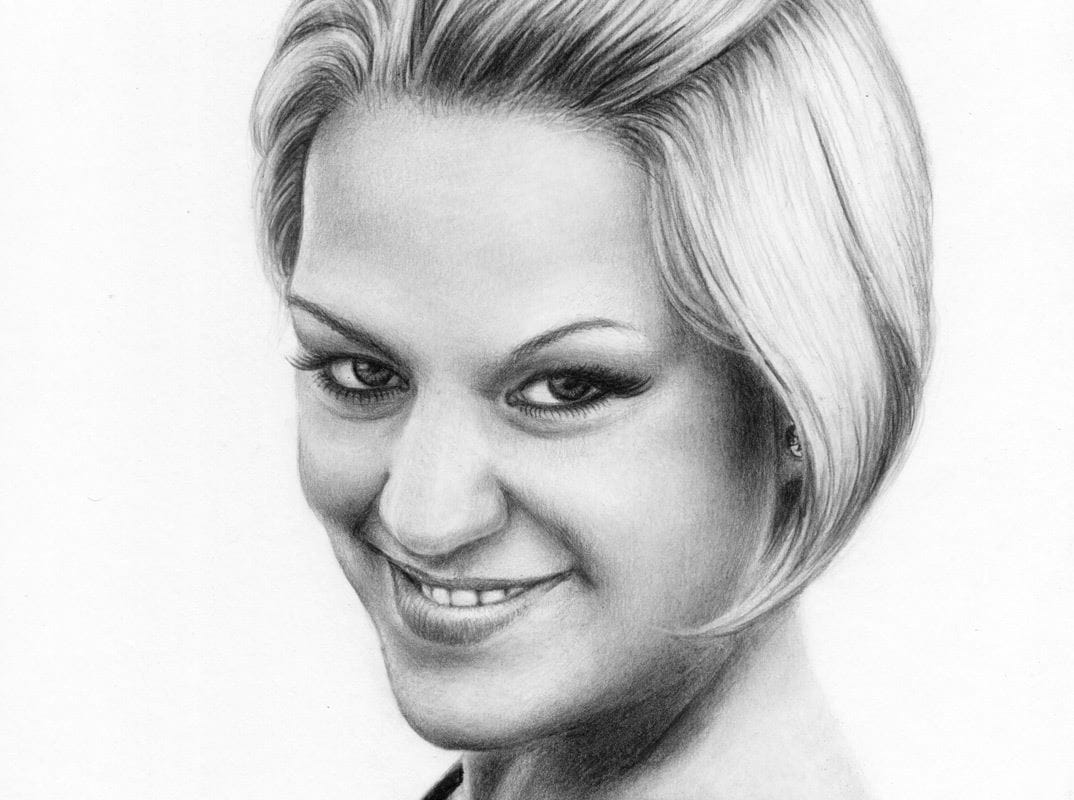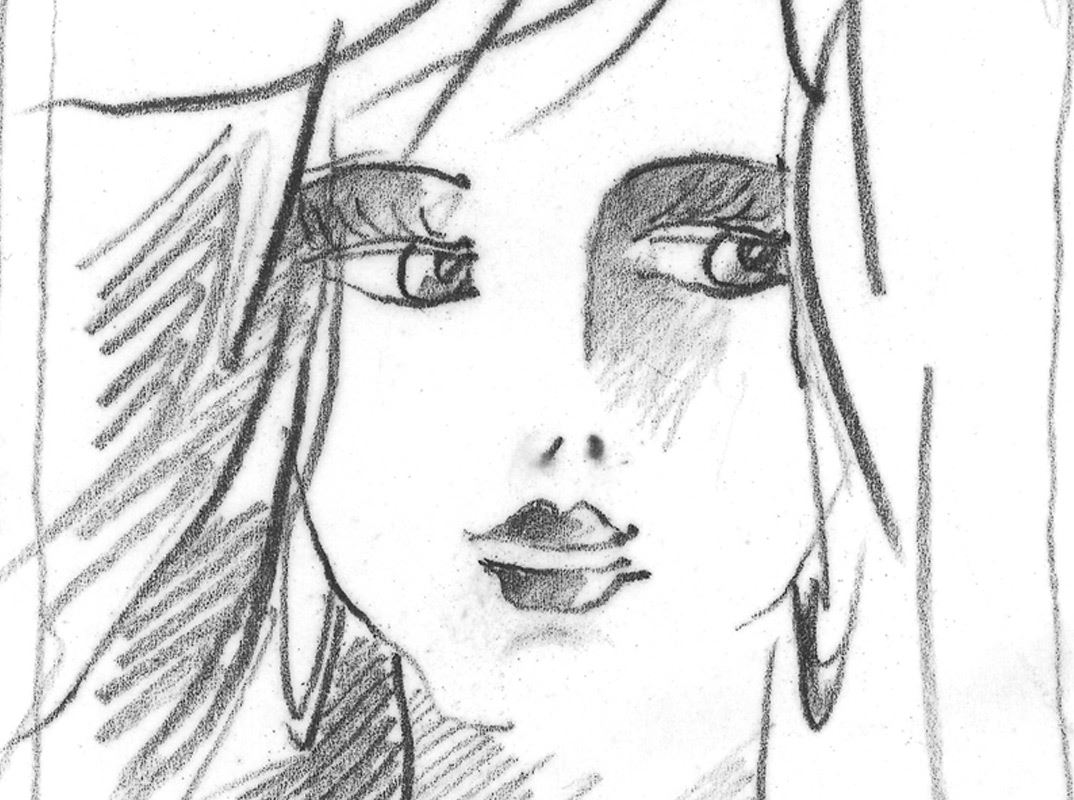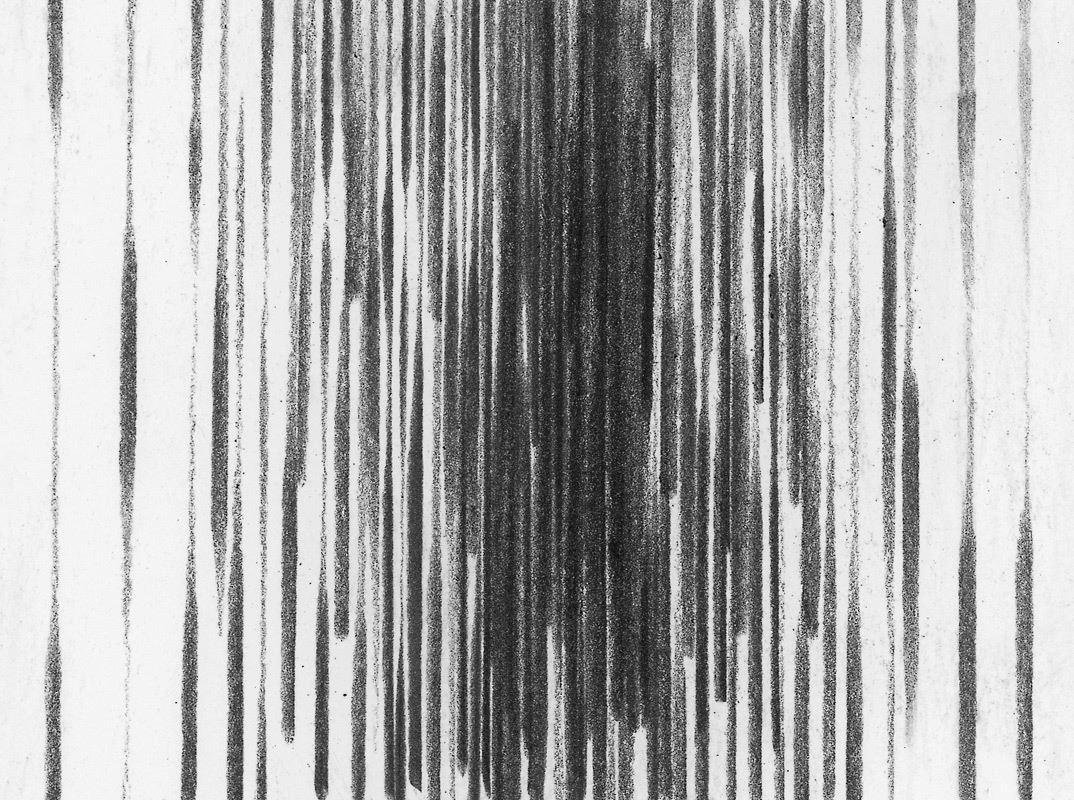Hold
Even the hold influences a drawing.
Held at the pencil’s end, the drawing’s
character will change to a loose sketch.
The further a pencil is held towards its tip,
the more specifically and exactly the lines
can be drawn.
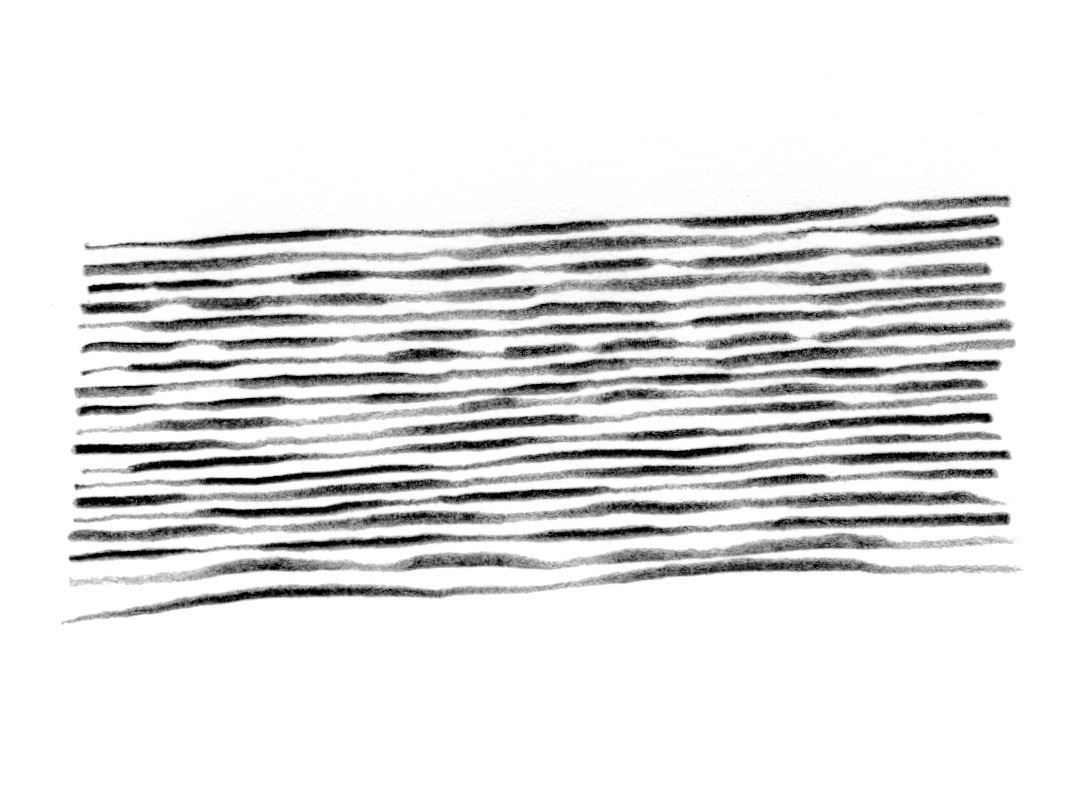
Varying pressure
Through varying the applied pressure, the same pencil can produce fine as well as wide lines. Drawing parallel lines while increasing and decreasing pressure is a good exercise for this technique.
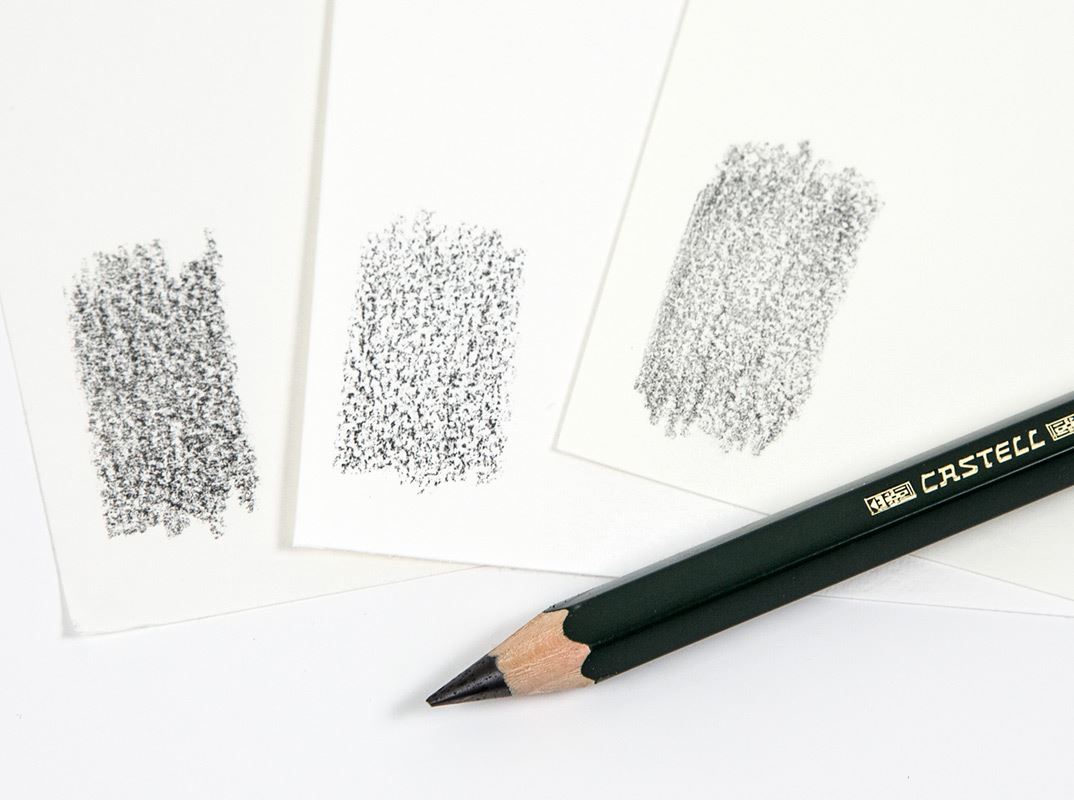
Surface
Choice of paper is of utmost importance
for the characteristics of a drawing.
The example on the right shows a Castell
9000 Jumbo 8B which has been used on
three different types of grained paper.
Depending on the grain, the structure of the
drawing is fi ne or coarse.
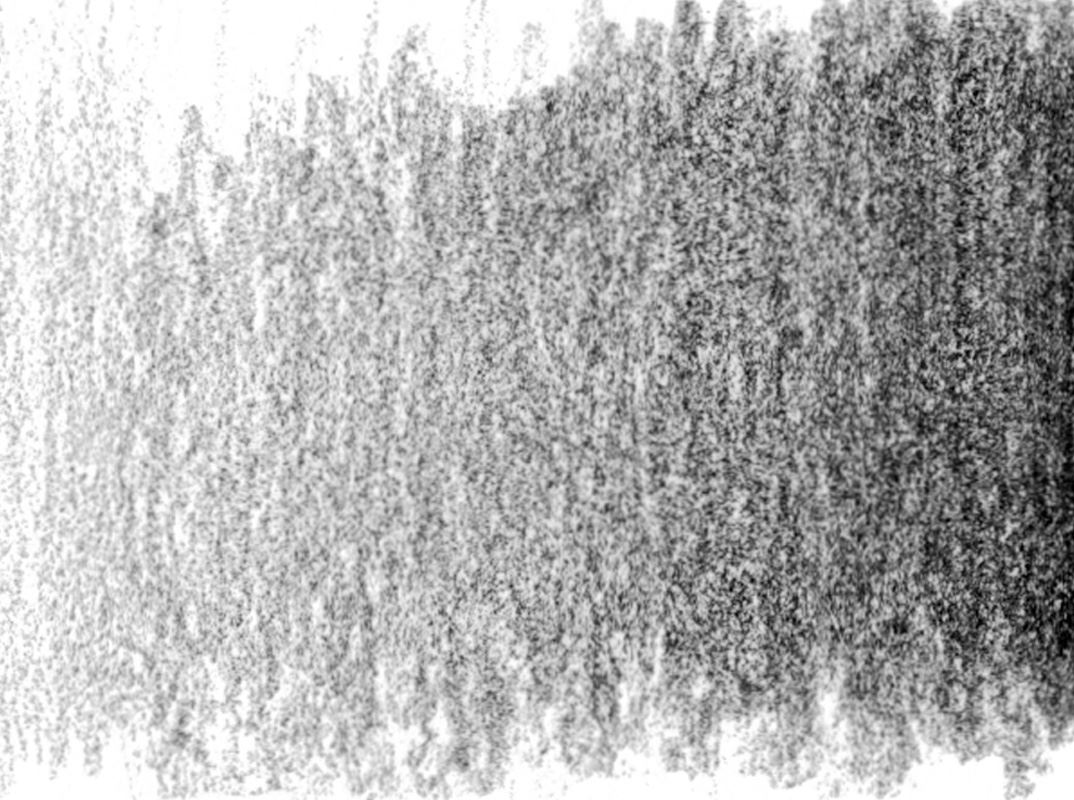
Light and shade
In monochrome depictions, colours are represented
in tonal values. Different shades of
grey convey the pictorial elements’ colour
intensity, surface properties and incidence
of light. They thus give the picture life and
depth.
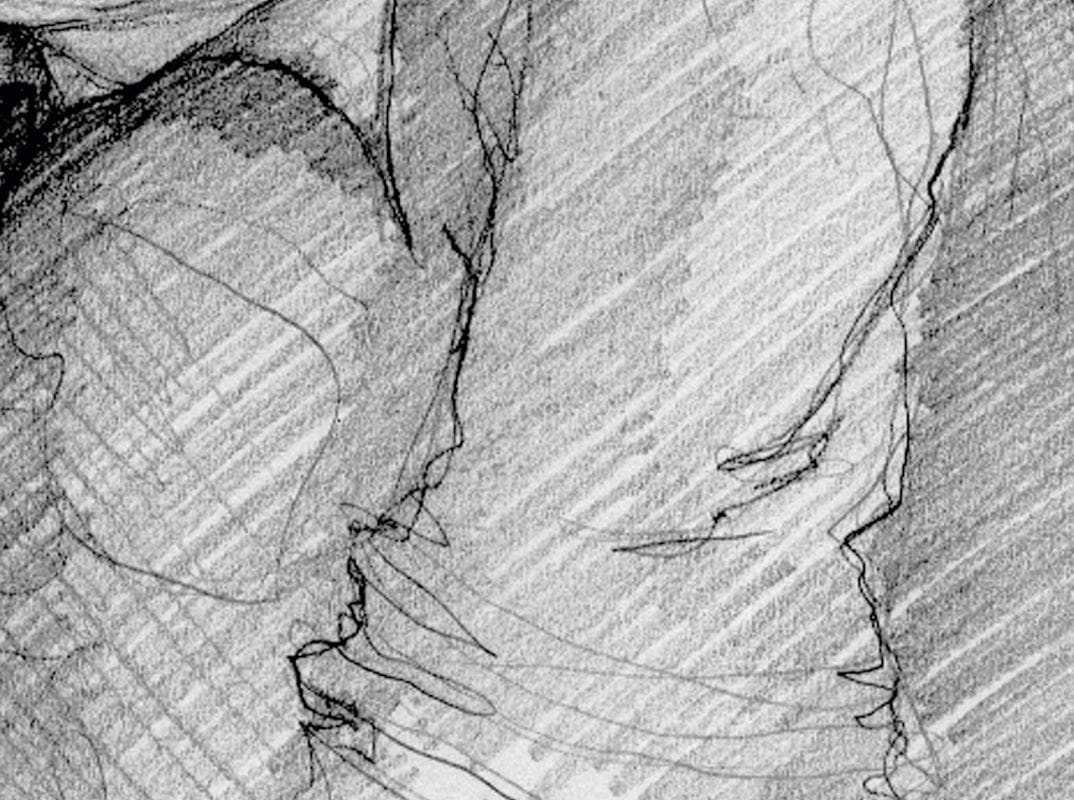
Hatching
When hatching the lines run in the same
direction. Different tonal values are
achieved through overlaying and condensing.
Line length and distance between the
lines further varies the optical result.
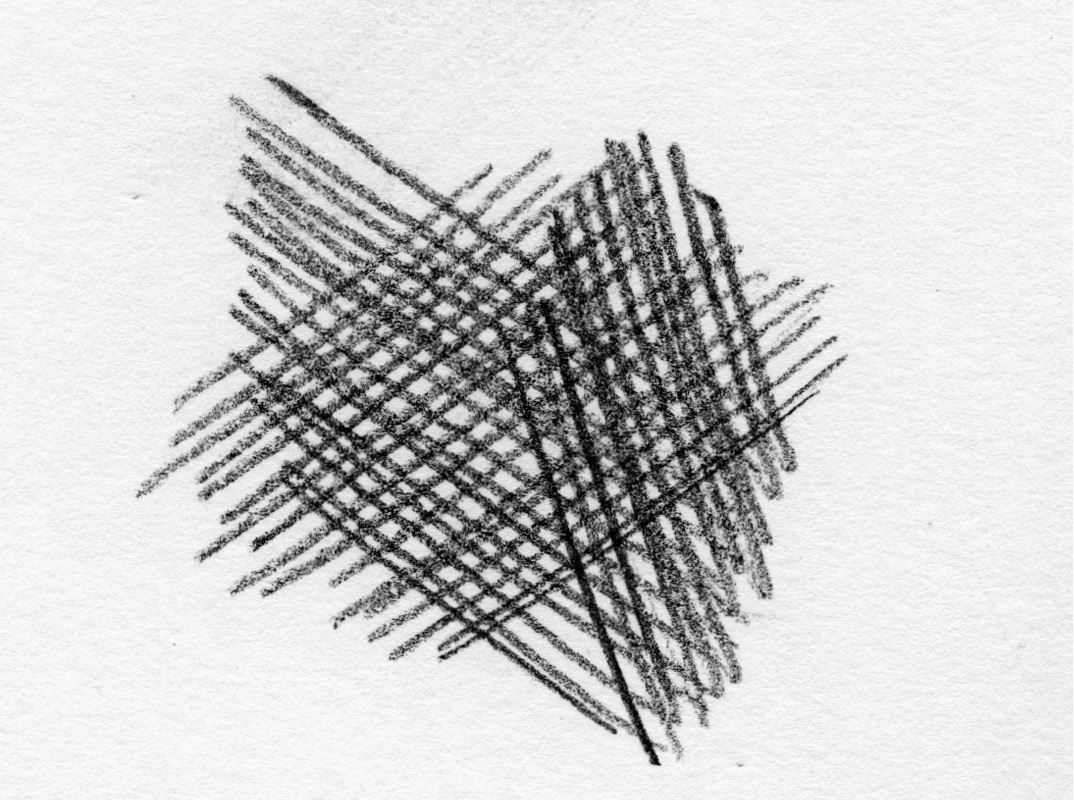
Cross-hatching
When cross-hatching, strokes of the pencil
in one direction are drawn on top of strokes
made at another angle. Differences in number
and density of the overlapping lines
create tonal shades.
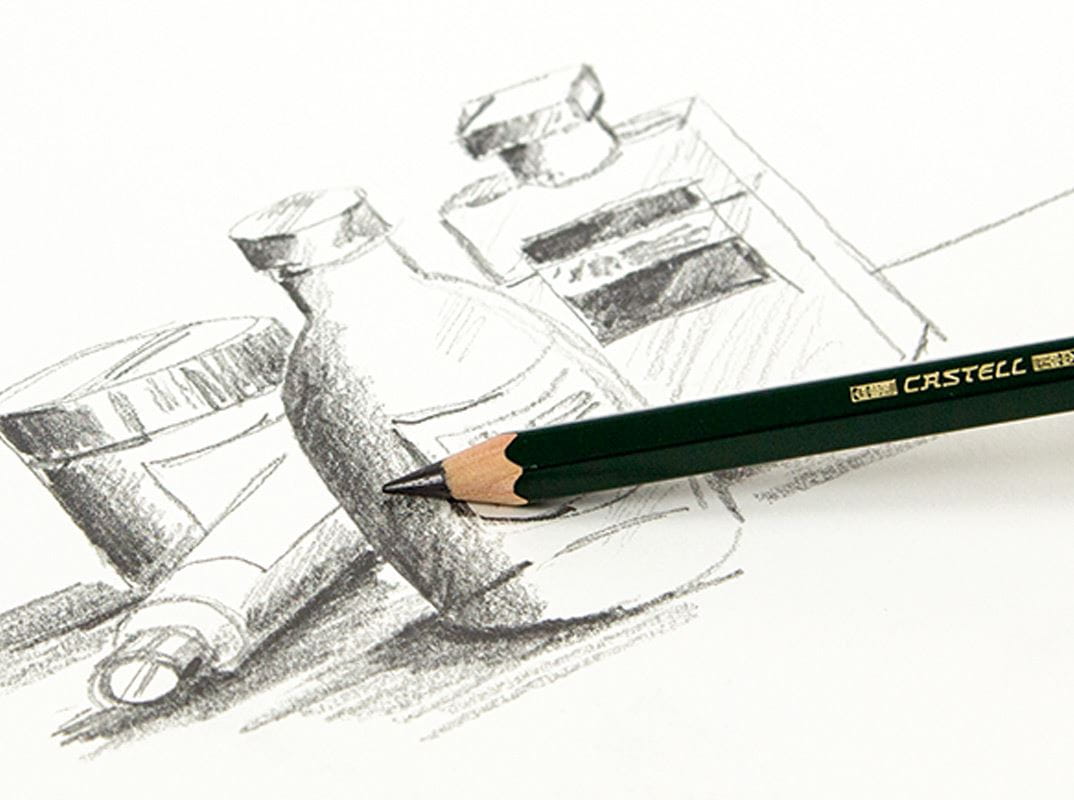
Overhand grip
When using the overhand grip, the pencil is
held in an extremely flat position in order
to create extensive laydown. This technique
helps to quickly create large areas and fluid
tonal shades.
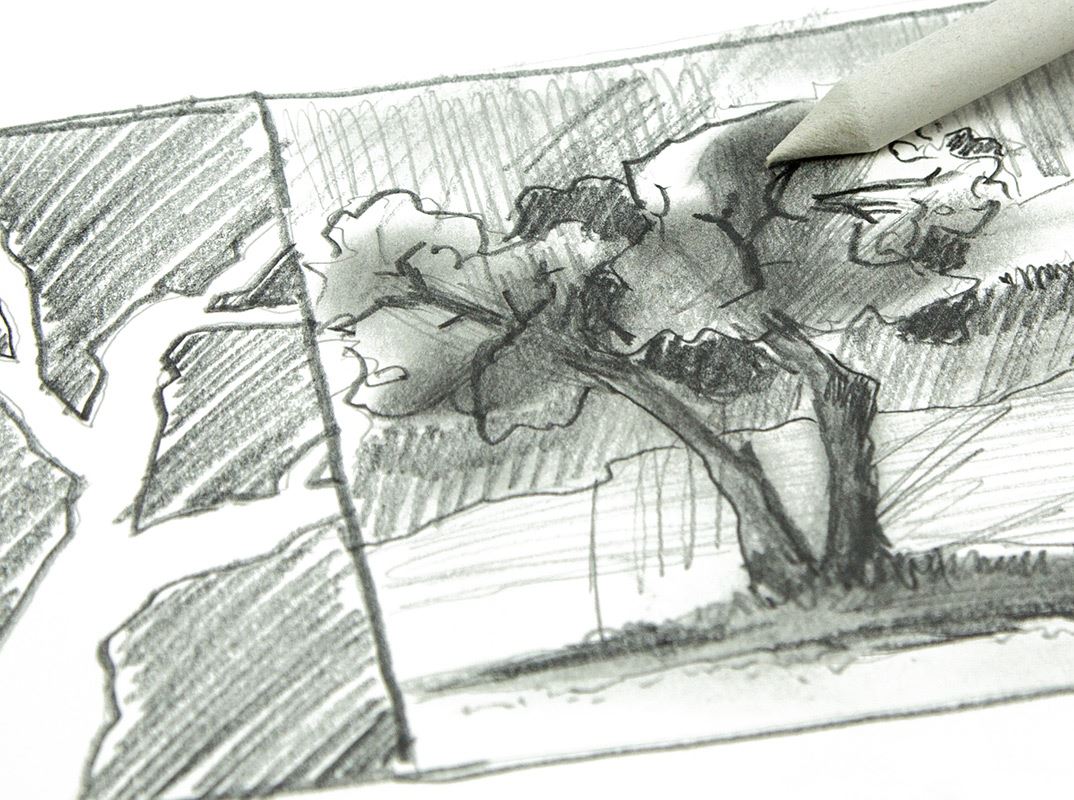
Smudging
Loosely applied graphite can be smudged
over a specific area with the help of a
paper wiper or finger. It is a very appealing
technique for creating clouds, water or
blurred backgrounds.
Inspiration
Click through and find inspiration for beautiful artwork and drawing ideas with our Castell 9000.


